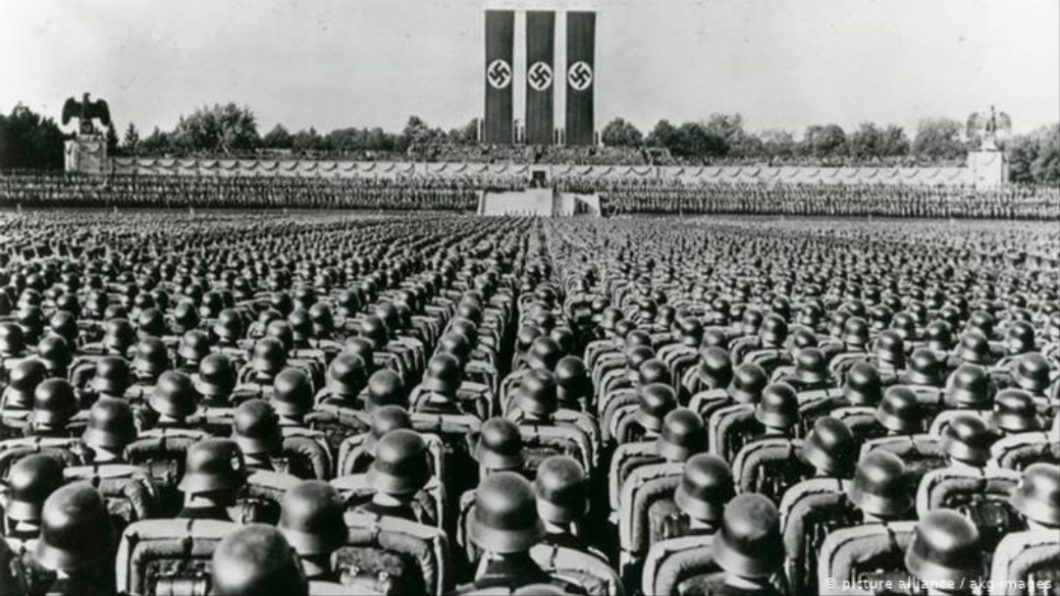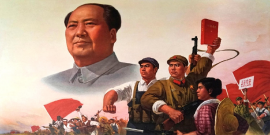At what point will the Left have gone too far?
Understanding Dictatorship
In How to Be a Dictator: The Cult of Personality in the Twentieth Century, Frank Dikötter provides readers with eight striking mini-portraits of 20th century dictators: Mussolini, Hitler, Stalin, Mao, Kim Il-sung, Duvalier, Ceauşescu, and Mengistu. In a brief preface, he tells us his aim is to place “the cult of personality where it belongs, at the very heart of tyranny.” Though previous analysts of tyranny have noted the role of these cults as well as terror as instruments of power, Dikötter suggests the former has been treated as a “mere aberration.” For the most part he allows these portraits to speak for themselves, making readers draw their own conclusions about the continuities and discontinuities across these figures. The resemblances are certainly striking and the dictator’s playbook seems remarkably similar across the regimes treated here.
In August of 1934, the Nazi “Rally of Unity and Strength” drew about 700,000 people—its principle aim was to glorify the Führer. These annual party rallies had already been happening for years and Hitler had long been associating his person and particular genius with the party itself. As his deputy Rudolph Hess put it at the opening of the rally, “[This Congress] stands under the banner of Adolf Hitler as the highest and only leader of Germany, under the banner of the ‘Führer as a concept embodied in state law.’” Benito Mussolini had announced his policy of “Going to the People” two years before. The Duce made appearances all around Italy—these were carefully managed public rallies where attendance by local populations was often compulsory. Attendees were whipped up into frenzies with press on hand to report enthusiasm of the local populations and the extent and depth of their embrace of their leader. Communist leaders too made use of public rallies—sometimes using traditions such as May Day parades—to evoke the appearance of popular support. On May Day in 1928 hundreds of thousands came to see Stalin and other party leaders atop wooden ramparts of the Lenin Mausoleum as a parade of military vehicles below and airplanes above passed by. Kim Il-sung used May Day in 1967 to affirm North Korea’s embrace of Juche Thought as the official ideology of North Korea with himself as the embodiment of this unity and self-reliance.
Mussolini, like Hitler and others in this book, were meticulous in their attention to their own image and self-presentation before the masses. Dikötter says Mussolini was simultaneously an “actor, stage manager, orator, and brilliant self-publicist.” These dictators were always striving to create that unity, that mystical bond, between the leader and the people. Stalin, following Lenin, became the “vozhd,” or great leader, embodying the will of the party. These dictators used sycophantic biographers, influential artists, and press agents to spread their cults and create the illusion of invincibility and universal embrace.
Maintaining these cults of personality did not only require mass rallies and propaganda. Building on Mussolini’s dictum of “All within the state, nothing outside the state, nothing without the state,” Hitler instituted Gleichschaltung, or synchronization, whereby the Nazi Party co-opted or simply replaced all formerly independent social and civic organizations. The dictators in communist regimes operated from a similar playbook, which is why interwar and postwar observers of these regimes embraced the term totalitarianism—despite fascist regimes being purportedly right-wing and communist regimes left-wing, they all seemed to be driven toward an unprecedented social domination. The purpose of the domination was the instantiation of a political order that would guarantee the realization of perfect justice. In the case of communism, the rule of the party would bring an end to alienation, ensure perfect equality, and allow for the elimination of dying classes. In the case of fascism and Nazism, the rule of the party would restore the lost dignity of a race or nation, guarantee its place of domination, and allow for the subordination or elimination of inferior races.
Seven of the eight dictators treated here presented themselves as the incarnation of an ongoing ideological transformation. Ceauşescu was Romania’s “ideologist-in-chief” and Mengistu founded the Workers’ Party of Ethiopia. On National Day in 1984 70,000 marched past their leader in Revolution Square carrying posters of Marx, Lenin, and Mengistu himself. Kim Il-sung founded Juche thought—in 1972 it become the official ideological foundation of the new constitution. The exception in this volume is Haiti’s Duvalier who Dikötter calls a “dictator’s dictator.” Duvalier “wielded naked power without the pretense of ideology, despite all the talk about revolution…There was no junta, no faction, no clique, no true party except in name only, only underlings vying for his attention, hoping to supplant each other by demonstrations of absolute loyalty.” Despite acknowledging this departure from the other figures in this book, Dikötter downplays it. Though noting the ideological claims of the other dictators, he suggests that the cult of personality is the more central phenomenon. He argues that personal loyalty mattered more than devotion to ideological principle and that “ultimately ideology was what the dictator said it was…He personalized power, making his word the law.”
The integrity of this body must be protected from the malevolent forces—“parasites”, etc.—which threaten its health and integrity.
Here Dikötter departs from other distinguished analysts of modern tyranny, including the historian Daniel Chirot and the political philosopher Waller Newell. Chirot, in his classic work Modern Tyrants, distinguishes between the “tyranny of corruption” and the “tyranny of ideological certitude.” The former type is defined by the concentration of power but in the service of the mere greed and corruption of the tyrant and his followers. In the latter case the tyrant’s ambition and control services a pseudo-scientific, utopian vision imposed on the population. In Tyrants: A History of Power, Injustice, and Terror, Newell draws the same distinction with “garden-variety tyrants” on the one hand and “millenarian tyrants” on the other. Dikötter rejects the significance of the distinction in rejecting ideology as the ultimate basis for power. He even maintains this position with regard to the totalitarian regimes of the first part of the 20th century. “The Bolsheviks,” he argues, “like the fascists and the Nazis, were a party held together not so much by a program or platform but by a chosen leader.” Here I think Dikötter is off the mark. As Chirot suggests, it is impossible to explain phenomena like the Holocaust or the Holodomor without reference to the ideological principles of the Nazis and the Communists. “In neither case,” writes Chirot, “would objective measures of self-interest on the part of the leaders lead to such outcomes if there had been no theory of history behind their governments. Perhaps even more important is that there would not have been so many willing to carry out these orders if there had not been considerable agreement, at least among the elites, that the scientific principles that lay behind these ideologies were valid.”
But how then are we to explain this strange confluence of totalitarian regimes and cults of personality? Totalitarian regimes are bound up with the emergence of modern democracy. As the philosopher Claude Lefort argues, the seat of power—according to the representative logic of modern democracy—is an “empty place”—the people themselves rule through these temporary holders of power. And the state is separated from civil society and represents its manifold divisions. Social heterogeneity is acknowledged and represented, not overcome. Totalitarian regimes strive for social homogeneity. The dividing line between the state and civil society is effaced. The image of the “People-as-One” is the image of the social body which needs constant intervention by the social engineer capable of organizing and protecting this homogenous mass. Embedded in the totalitarian experiments is a logic of identification: The people is identified with the proletariat, the proletariat with the party, the party with the leadership, and the leadership with the one leader, who Solzhenitsyn called the “Egocrat.”
This image of the body in totalitarianism works in two directions. The integrity of this body must be protected from the malevolent forces—“parasites”, etc.—which threaten its health and integrity. And each organ of the body, in Lefort’s account, “is both the whole and the detached part that makes the whole.” The Party IS the people, the Egocratic IS the party. The omniscient, benevolent leader “offers his own body—individual, mortal, endowed with all virtues—whether he is called Stalin or Mao or Fidel.” Although I disagree with Dikötter on this the question of the relation between the phenomenon of the cult of the leader and ideology, he has written a rich and fascinating study of eight dictators. How to Be a Dictator deserves a place alongside other classic accounts of the subject like Modern Tyrants and Tyrants: A History of Power, Injustice and Terror.



